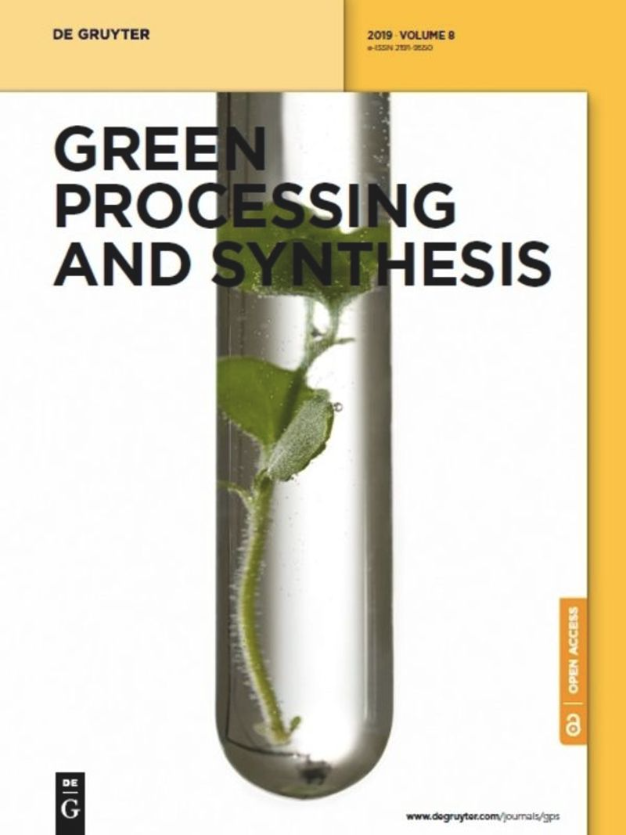Leveraging of mycogenic copper oxide nanostructures for disease management of Alternaria blight of Brassica juncea
IF 3
4区 工程技术
Q2 CHEMISTRY, MULTIDISCIPLINARY
引用次数: 1
Abstract
Abstract Brassica is one of the crops sensitive to low copper supply, leading to Alternaria blight. The present study reflects the synthesis of myco-derived copper oxide (M-CuO) nanoparticles (NPs) from Trichoderma asperellum and investigates their effect against Alternaria blight of Brassica in two soil types, alluvial and calcareous. Foliar applications of different treatments were used to treat plants: T1 (mancozeb@0.2%), T2 (propiconazole@0.05%), T3 (T. asperellum filtrate), T4 (M-CuO NPs), T5 chemically synthesized (C-CuO NPs), and T6 bulk phase (BP-CuO @25, 50, 100, 150, and 200 ppm) of each in twice such as protectant and curative method under pot experiments. M-CuO NPs in two protective sprays exhibit up to 75% disease suppression in alluvial soil, compared to 68.9% suppression in curative spray at 200 ppm. Maximum seed yield and seed number were obtained, 1.95 g/plant and 850 seeds/plant in alluvial soil, but in calcareous soil, seed yield (1.14 g/plant) and seed number 414 seeds/plant were recorded in plants supplemented with M-CuO NPs as a protectant. In both soils, maximum plant height was increased by protective applications of M-CuO NPs at 200 ppm. Thus, the present study suggested that among foliar sprays of copper nanocompounds, protective activity shows better results as compared to curative activity. Among all the treatments, M-CuO NPs were found to be most effective in suppressing disease and improving productivity and growth-promoting effects of Brassica.分枝杆菌源性氧化铜纳米结构在芥菜链格孢病防治中的应用
摘要芸苔属是对低铜供应敏感的作物之一,可引起链格孢枯萎病。本研究反映了从木霉中合成真菌衍生的氧化铜(M-CuO)纳米颗粒(NPs),并研究了它们在冲积和钙质两种土壤类型中对芸苔属链格孢病的防治作用。不同处理的叶面施用被用于处理植物:T1(mancozeb@0.2%),T2(propiconazole@0.05%),T3(T.asperellum滤液),T4(M-CuO NP),T5化学合成(C-CuO NP)和T6体相(BP CuO@25、50、100、150和200 ppm),如保护剂和在盆栽实验下的治疗方法。两种保护喷雾中的M-CuO NPs在冲积土中表现出高达75%的疾病抑制作用,而在200 ppm。获得了最大种子产量和种子数量,1.95 g/株,在冲积土中为850粒/株,但在石灰性土壤中,种子产量(1.14 g/株)和种子数414种子/株的植物中记录。在这两种土壤中,M-CuO NPs在200 ppm。因此,本研究表明,在铜纳米化合物的叶面喷雾中,与治疗活性相比,保护活性显示出更好的效果。在所有处理中,M-CuO NPs在抑制油菜病害、提高产量和促进生长方面最为有效。
本文章由计算机程序翻译,如有差异,请以英文原文为准。
求助全文
约1分钟内获得全文
求助全文
来源期刊

Green Processing and Synthesis
CHEMISTRY, MULTIDISCIPLINARY-ENGINEERING, CHEMICAL
CiteScore
6.70
自引率
9.30%
发文量
78
审稿时长
7 weeks
期刊介绍:
Green Processing and Synthesis is a bimonthly, peer-reviewed journal that provides up-to-date research both on fundamental as well as applied aspects of innovative green process development and chemical synthesis, giving an appropriate share to industrial views. The contributions are cutting edge, high-impact, authoritative, and provide both pros and cons of potential technologies. Green Processing and Synthesis provides a platform for scientists and engineers, especially chemists and chemical engineers, but is also open for interdisciplinary research from other areas such as physics, materials science, or catalysis.
 求助内容:
求助内容: 应助结果提醒方式:
应助结果提醒方式:


